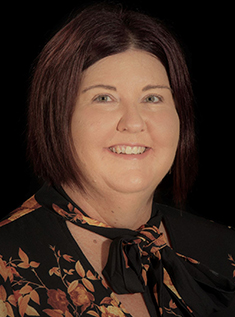 Many locations within Australia and Aotearoa New Zealand experienced extreme flood and storm events over the summer months. I would like to acknowledge the significant efforts of the staff and volunteers in the emergency services, police, health, community, government, non-government, defence, business, media and utility sectors who gathered alongside residents of affected areas to manage the complexities of these events together.
Many locations within Australia and Aotearoa New Zealand experienced extreme flood and storm events over the summer months. I would like to acknowledge the significant efforts of the staff and volunteers in the emergency services, police, health, community, government, non-government, defence, business, media and utility sectors who gathered alongside residents of affected areas to manage the complexities of these events together.
In this issue of the Australian Journal of Emergency Management, Andrew Gissing (Risk Frontiers) observes the aftermath of the recent flooding in Lismore through the lens of two decades of experience researching floods in the area. Flood risk, mitigation, urban planning, emergency services and community response intersect to provide both challenges, and solutions, for Lismore and similar flood-prone settlements.
The experiences of communities following extreme flooding will be crucial to recovery. This issue of the journal features Recovery Capitals1 joint-winner of the National Mental Health and Wellbeing award in the 2021 Resilient Australia Awards. Developed collaboratively by researchers and practitioners across Australia and Aotearoa New Zealand, Recovery Capitals is a set of evidence-based resources that assist people and organisations during recovery. Central to the development of these resources was the use of a participatory approach to capture practitioner experiences and cultural contributions supporting inclusive and holistic community-led recovery.
Readers involved in flood recovery may benefit from a further collection of flood recovery resources available through the Australian Disaster Resilience Knowledge Hub.2
Stepping off the floodplain, other types of natural hazards feature in this issue of the journal. A rare ‘vog’ event (hazy air pollution caused by volcanic gas emissions) in Aotearoa New Zealand, a heatwave refuge strategy for Blacktown (Sydney) and cutting-edge remote sensing technologies for remotely mapping bushfires highlight the diversity of practice within the emergency management sector. The participation of children and youth in disaster risk reduction and emergency management is often prominent. Congratulations to the school winners of the competition to name the National Large Air Tanker. Far from spoiling the surprise here, the name of the new tanker is revealed on page 11.
Introducing Viewpoints
Extreme weather events often galvanise attention onto the strategic intent and effectiveness of disaster risk reduction (DRR) policy. Our new Viewpoints series examines the challenges of mainstreaming DRR across policy sectors. Emeritus Professor Stephen Dovers (Australian National University) contributed a seed article proposing that ‘as we don’t know how effectively DRR is being mainstreamed across different policy sectors, a systematic assessment would be needed to identify areas for improvement’.
Eminent practitioners were invited to respond to Professor Dovers’ proposition, discussing the sectoral opportunities and challenges of mainstreaming DRR and the idea of a systematic assessment. Mark Crosweller (Ethical Intelligence), Robert Glasser (Australian Strategic Policy Institute), Kylie Macfarlane (Insurance Council of Australia), Nico Padovan (National Recovery and Resilience Agency), Robert Webb (AFAC) and Linda Scott (Australian Local Government Association) provide thoughtful, sectoral perspectives. The influence of climate change on extreme events situates the urgency of disaster risk reduction initiatives across all sectors, but competing priorities, policy settings and governance must be analysed then navigated to achieve systemic and transformative reform. I hope that readers enjoy this new feature of the journal and are prompted to think about what mainstreaming DRR may mean in their own sector or role.


